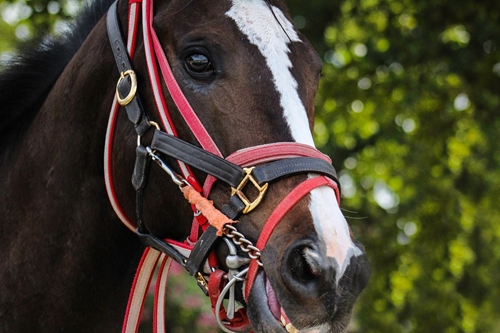Everyone has high hopes when purchasing a horse, but these dreams of competing are quickly destroyed if you’re not careful. If you don’t approach your new equine in the correct manner, it will immediately grow anxious and unsettled around you, making it difficult to ride. Here’s how to introduce yourself to a new horse so the two of you develop a healthy, loving bond:
“Always calm yourself before approaching a new horse.”
Start by focusing inward
As Equine Wellness Magazine points out, we often approach horses with high expectations. We tend to project certain attitudes onto them and try to befriend them using various emotional tricks, not by evaluating and adjusting our behavior. In truth, the first thing you should do before approaching a new horse is to calm yourself . Give yourself 20 minutes to focus, breathe and expel any negativity or excess energy from earlier in the day. Your horse can sense any emotional distress and won’t be very receptive to you as a result.
Greet before you touch
Think to the last time you made a new friend. It was probably a while before the two of your became comfortable giving each other a goodbye hug. A new horse is the same way – it wants to develop a relationship with you before being touched. You’re a complete stranger to it, and no one likes being touched by someone they don’t know. Instead of immediately petting, grooming or saddling your horse, give it a moment to get used to your presence. Try introducing yourself and waiting a few moments for your horse to approach you.
Once your horse does allow you to touch it, keep your physical interactions brief. As Franklin Levinson, a professional horseman, explains, too much touching can overstimulate a horse. Naturally, these animals show affection for brief periods of time, then give each other space. You should do the same until your horse is more comfortable with you. Instead of excessively touching your equine, talk to it frequently in a calm manner so it gets used to the sound of your voice.
“It’s safe to pet a horse once it starts to smell you.”
Advance briefly, then retreat
When the horse starts focusing on you with its ears pointed in your direction, extend your hand towards its nose. If the animal starts to smell you and nudges your hand, it’s okay to start petting it. Approach it slowly, stand motionless for a few seconds, then back away. Repeat this gesture, scratching your horse softly on the shoulder this time. According to Levinson, this action makes horses feel safe rather than anxious. Advancing and retreating isn’t something their natural predators do, so their instincts don’t kick in.
Adjust your expectations
Horses take a while to bond with us – often, longer than we’d like. We expect our new equines to love us within a few days, but such a friendship can take weeks or months to develop.
Patience is essential during this time. If your horse senses even a hint of frustration over the fact that you two have yet to bond, it could undo weeks’ worth of progress. Continue to approach your horse slowly and calmly, interacting a little more each time. Eventually, the two of you will become great riding partners.
If your horse still has a nervous attitude on occasion, try equine supplements with vitamin B1 and calcium like Finish Line’s Thia-Cal and Quia-Cal. The daily supplement Thia-Cal supports a healthy nervous system in your horse, which is particularly important when the time comes to perform. The fast-acting Quia-Cal paste can be given to your horse in stressful situations or when it is time to compete.








